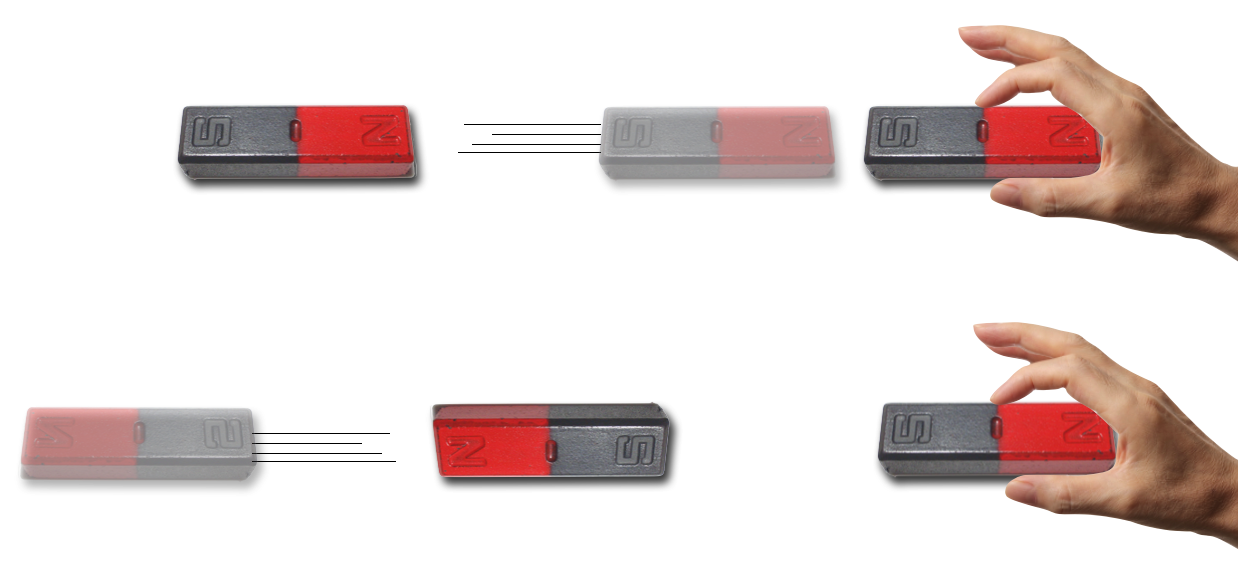11.2. Magnetism#
Puzzles regarding electricity and magnetism dominated the first two decades of the 19th century and it was in resolving this exciting confusion that led us to radio, TV, cell phones, and all that’s good about life. The notion that one’s hair might stand on end when combed, or that certain stones might move one another without touching had been disconcerting for millennia. Indeed, by about 1600, magnetism especially was thought to be magic and associated with illnesses and odd cures. But this period marked the beginning of thoughtful reasoning and experimentation in the natural sciences and we saw that William Gilbert literally “wrote the book” on magnetism, both describing his own researches and specifically debunking one-by-one the various ways in which magnets were thought to be helpful or harmful.
11.2.1. Magnets#
Let’s review the simple facts about magnets that we’ve all known since childhood. Magnets come in one “package” a bar of typically iron in which the two ends are special: one is by convention called “North” and the other “South,” inheriting their names from a compass’s use as a pointer to the north geographic pole. The pole of the magnet that points to the north geographic pole is dubbed “North.” The other fact that we all know is that you can cut a magnet into pieces all day long and you’ll never isolate a separate north or south magnetic “monopole.” “Never” is a tough word to use in science and even though an atomic explanation for magnetism in bulk is now accepted, there are theories of cosmology which require the creation of separate, magnetic “charges” that have yet to be discovered.

If you come near to a target north pole with a second magnet’s north pole, the target will be forced away. Likewise, if you approach with the opposite, south pole, the magnets will be attracted. Endless fun. But what’s actually going on and how to characterize the phenomenon? Clearly there are forces created between magnetic poles with no material connection between them and this had been a puzzle since the Greeks created the first refrigerator communication device. (Okay. I made that up, but the Greeks first noted magnetism and named it for one of two towns called Magnesia—there is dispute about which.) In any case, the order is clear:
things everyone knows about magnets
Magnetized objects have both “north” and “south” poles which always seem to come in pairs and cannot be isolated.
Magnets exert forces on Magnets: Like poles repel and opposite poles attract.
Please answer Question 1 for points: